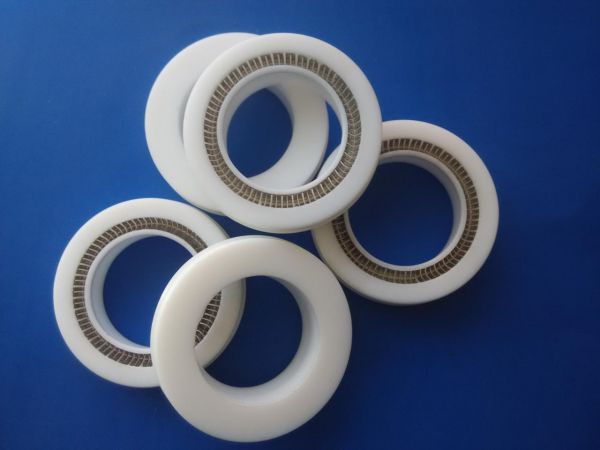PTFE oil seal is a heat-resistant material made of polytetrafluoroethylene (PTFE), also known as Teflon/Teflon or plastic king. So, what is the sealing mechanism of PTFE PTFE oil seal? Since PTFE has memory shrinkage ability after being drawn, the friction heat generated during work will cause the lip to shrink continuously, so it does not need the help of a spring. It will hug the shaft tightly and prevent it from leaving any gap with the shaft surface. , while compensating for wear and tear.
1. Therefore, what are the characteristics of PTFE PTFE oil seal materials?
1. Chemical stability: Almost all chemical resistance, strong acids, strong alkali or strong oxidants and organic solvents have no effect on it.
2. Thermal stability: The cracking temperature is above 400℃, so it can work normally in the range of -200℃ to 350℃.
3. Anti-friction: The friction coefficient of PTFE material is extremely low, which is 1/40 of rubber.
4. Self-lubricating: The surface of PTFE material has outstanding self-lubricating properties, and almost all sticky substances cannot adhere to its surface.

2. What are the advantages of PTFE PTFE oil seals compared with ordinary rubber oil seals?
1. The PTFE oil seal adopts a spring-free wide-lip dynamic design structure and can work normally under most working conditions;
2. When the shaft rotates, an inward thrust is automatically generated (the pressure is higher than that of ordinary rubber oil seals), which can prevent fluid from flowing out;
3. PTFE oil seals are suitable for working environments with no or little oil, and have low friction characteristics after shutdown and startup. They are more widely used than ordinary rubber oil seals;
4. PTFE seals can seal water, acids, alkalis, solvents, gases, etc.;
5. The maximum operating temperature of PTFE oil seal can reach 350℃;
6. PTFE oil seal is suitable for high-speed rotation applications, and the linear speed is higher than that of ordinary rubber.





